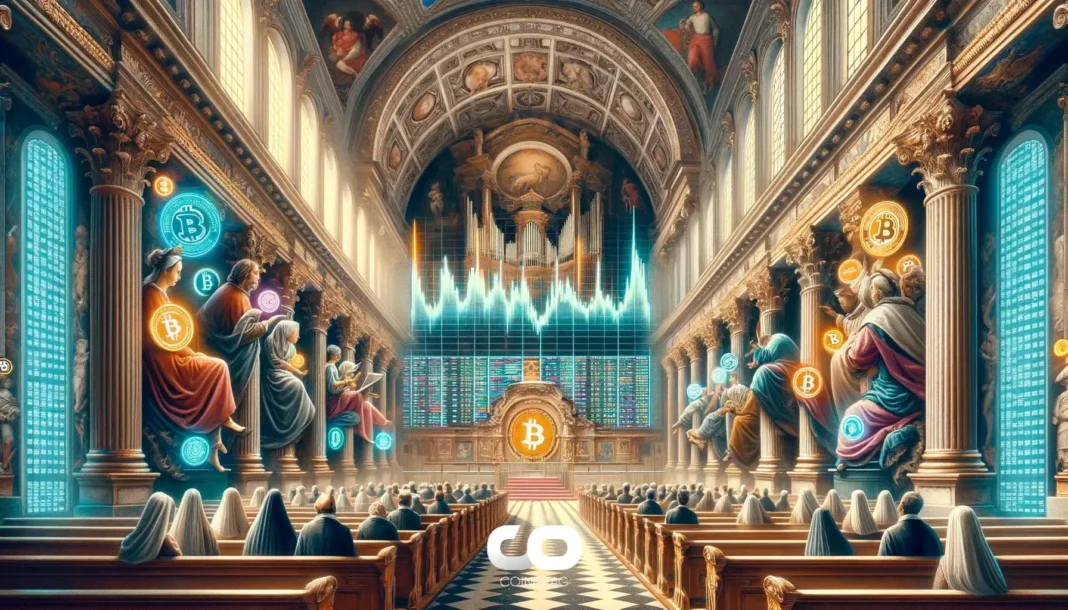Bitcoin’s price rose 2% to around $111,300 following the U.S. Consumer Price Index (CPI) increase of 3% in September, slightly below the forecasted 3.1%. This cooling inflation data has boosted crypto markets ahead of the Federal Reserve’s policy meeting, signaling potential rate cuts.
-
Bitcoin gains 2% amid lower-than-expected U.S. inflation.
-
Ethereum and Solana also surged, up 2.5% and 2.1% respectively in the last 24 hours.
-
Core inflation softened to 3%, providing relief to markets concerned about trade tensions and economic slowdowns.
Bitcoin rises on cooling U.S. inflation to 3% in September 2025, below expectations. Explore how this impacts crypto prices and Fed decisions. Stay informed on market trends today!
What is the impact of cooling U.S. inflation on Bitcoin prices?
Bitcoin price rise inflation data plays a pivotal role in cryptocurrency markets, as lower inflation often signals potential interest rate reductions by the Federal Reserve, making risk assets like Bitcoin more attractive to investors. In September, the U.S. CPI rose 3% year-over-year, missing economists’ 3.1% forecast from Trading Economics, which led to a 2% uptick in Bitcoin’s value to $111,300 according to CoinGecko. This development has eased concerns over persistent inflationary pressures, fostering renewed investor confidence ahead of the Fed’s upcoming meeting.
How has the September CPI report influenced Ethereum and other altcoins?
The September CPI report, released by the Bureau of Labor Statistics, indicated a 3% annual increase in consumer prices, with core inflation easing to 3% from 3.1% the prior month. This softer-than-anticipated data has reverberated through the crypto space, propelling Ethereum to $3,960—a 2.5% gain—and Solana to $193, up 2.1% in 24 hours, as reported by CoinGecko. Experts note that while Bitcoin leads the recovery, altcoins often follow suit when macroeconomic indicators like inflation point toward accommodative monetary policy. For instance, Federal Reserve Chair Jerome Powell recently emphasized a “meeting-by-meeting approach” to policy, highlighting the balance between inflation control and labor market stability. Trade tensions, including U.S.-China tariffs, have pushed gold to record highs, but the cooling inflation has mitigated some downside risks for digital assets. Market sentiment on prediction platforms like Myriad shows “Greed” prevailing at 58% versus 42% “Fear,” a shift from earlier spikes amid shutdown uncertainties. The data underscores the interconnectedness of traditional economics and crypto, where even minor deviations in forecasts can trigger volatility or rallies. As the Fed digests this information, expectations for a 25-basis-point rate cut remain high at 88% for December per CME FedWatch Tool, potentially sustaining upward momentum in Bitcoin and beyond.
Frequently Asked Questions
What caused Bitcoin’s recent 2% price increase?
Bitcoin’s 2% rise to $111,300 stems from the U.S. CPI reporting 3% inflation for September, below the 3.1% forecast by economists polled by Trading Economics. This positive surprise reduced fears of aggressive Fed tightening, encouraging investments in cryptocurrencies as a hedge against economic uncertainty.
Will the Federal Reserve cut rates following the September inflation data?
Yes, the Federal Reserve is expected to implement a quarter-point interest rate cut at its next meeting, based on market probabilities from the CME FedWatch Tool showing an 88% chance for December. Officials are prioritizing labor market health amid cooling inflation, as noted by Chair Jerome Powell’s comments on navigating policy without a risk-free path.
Key Takeaways
- Cooling Inflation Boosts Crypto: The 3% CPI rise in September has directly contributed to Bitcoin’s 2% gain, highlighting the asset’s sensitivity to U.S. economic indicators.
- Altcoin Momentum Builds: Ethereum and Solana followed Bitcoin’s lead with gains of 2.5% and 2.1%, reflecting broader market relief from subdued inflation pressures.
- Fed Policy in Focus: Anticipated rate cuts could further support crypto prices; investors should monitor upcoming meetings for sustained trends and adjust portfolios accordingly.
Conclusion
The Bitcoin price rise on cooling U.S. inflation in September underscores the cryptocurrency’s role as a barometer for global economic shifts, with the 3% CPI figure alleviating concerns over trade disputes and fiscal challenges like the government shutdown. As core inflation softens and the Federal Reserve leans toward rate reductions, market participants can expect continued volatility but with an optimistic tilt toward growth. Looking ahead, staying attuned to upcoming policy decisions will be crucial for navigating the evolving landscape of digital assets—consider diversifying your holdings to capitalize on these emerging opportunities.







